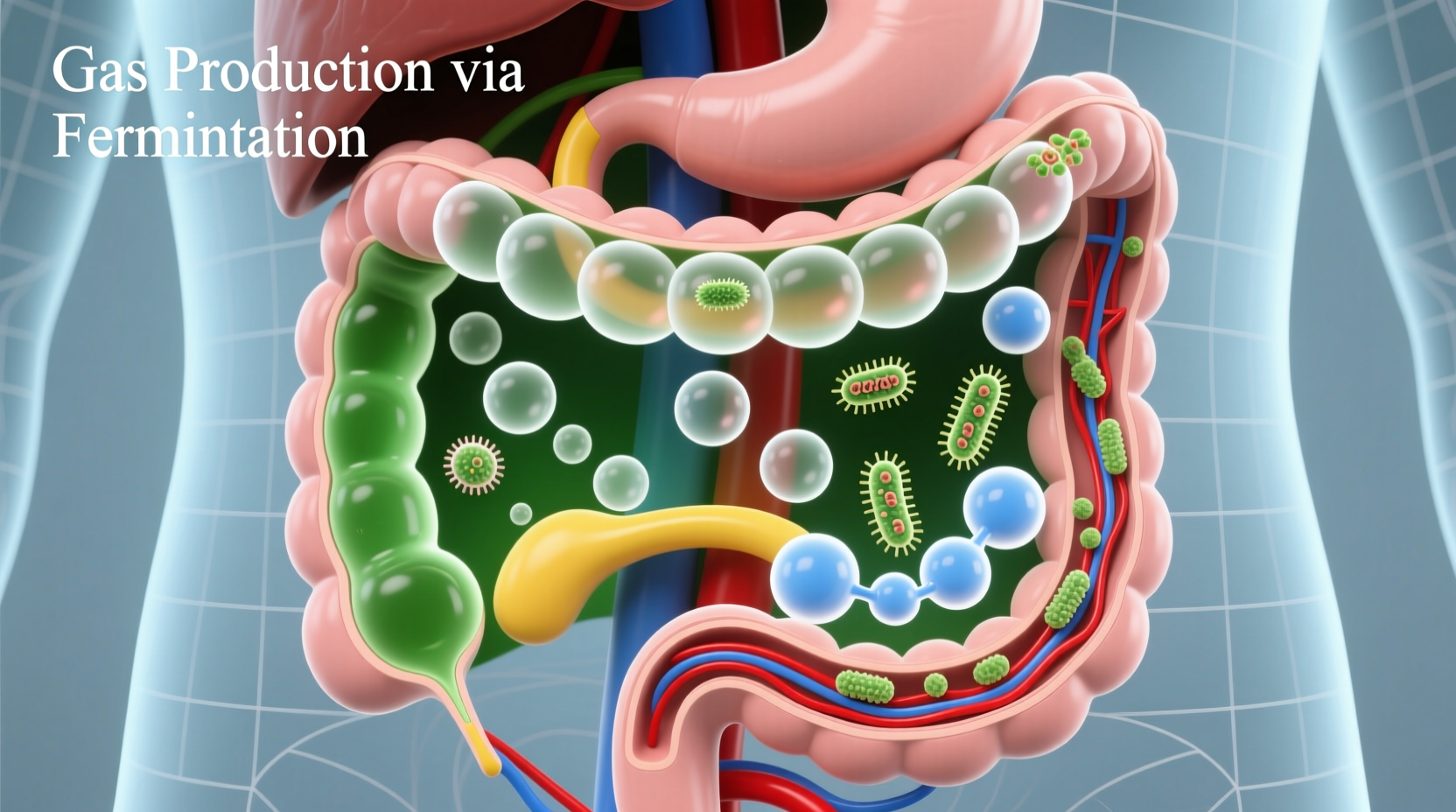If you've ever wondered why certain meals leave you feeling uncomfortably bloated or gassy, you're not alone. This comprehensive guide identifies exactly which foods create gas, explains the science behind why they cause digestive discomfort, and provides practical, evidence-based strategies to enjoy your favorite foods while minimizing embarrassing symptoms.
Why Do Certain Foods Create Gas in the First Place?
Gas production is a completely normal part of digestion, but some foods trigger significantly more gas than others. When undigested carbohydrates reach your large intestine, gut bacteria ferment them, producing hydrogen, methane, and carbon dioxide. This natural fermentation process is healthy, but it can become uncomfortable when excessive.
The key culprits fall into specific categories that share common characteristics:
Top Food Categories That Create Gas
1. Legumes and Beans
Beans, lentils, and chickpeas contain raffinose, a complex sugar your small intestine can't fully break down. When this sugar reaches your colon, bacteria feast on it, producing significant gas.
2. Cruciferous Vegetables
Broccoli, cauliflower, Brussels sprouts, and cabbage contain raffinose and fiber that feed gut bacteria. While incredibly nutritious, they're notorious gas producers for many people.
3. Dairy Products
Milk, cheese, and ice cream contain lactose. If you're lactose intolerant (affecting approximately 65% of the global population to some degree), your body lacks sufficient lactase enzyme to digest this sugar properly, leading to gas, bloating, and discomfort.
4. High-Fructose Foods
Apples, pears, honey, and high-fructose corn syrup can cause gas because some people have difficulty absorbing fructose completely. The unabsorbed fructose then ferments in the colon.
5. Carbonated Beverages
Soda, sparkling water, and beer introduce carbon dioxide directly into your digestive system. You're literally swallowing gas when you consume these beverages.
6. Artificial Sweeteners
Sorbitol, mannitol, and xylitol (common in sugar-free products) are poorly absorbed by many people, leading to fermentation and gas production.
| Food Category | Common Gas-Producing Foods | Primary Gas-Causing Component | Typical Onset Time |
|---|---|---|---|
| Legumes | Beans, lentils, chickpeas | Raffinose | 6-8 hours |
| Cruciferous Vegetables | Broccoli, cauliflower, cabbage | Raffinose & Fiber | 4-6 hours |
| Dairy Products | Milk, ice cream, soft cheeses | Lactose | 30 mins - 2 hours |
| High-Fructose Foods | Apples, pears, honey | Fructose | 1-3 hours |
| Carbonated Drinks | Soda, sparkling water, beer | Carbon dioxide | Immediate |
This fact comparison table, based on research from the Mayo Clinic, shows how different food categories produce gas through various mechanisms and timeframes.
Individual Variations in Gas Production
It's crucial to understand that not everyone reacts the same way to gas-producing foods. Your unique gut microbiome, digestive enzyme levels, and overall digestive health significantly impact which foods create gas for you specifically.
According to a Harvard Health publication, "what causes gas in one person may not affect another at all." This explains why your friend might tolerate beans perfectly while they leave you uncomfortably bloated.

Practical Strategies to Reduce Gas from Problem Foods
Gradual Introduction Method
Instead of eliminating gas-producing foods entirely, try introducing them gradually. Start with small portions of beans or cruciferous vegetables and slowly increase over weeks. This allows your gut bacteria to adapt, potentially reducing gas production over time.
Proper Food Preparation Techniques
How you prepare gas-producing foods matters significantly:
- Soak dried beans for 8-12 hours before cooking, changing the water several times
- Cook vegetables thoroughly—raw cruciferous vegetables produce more gas than cooked ones
- Consider adding epazote (a traditional Mexican herb) when cooking beans, which research suggests may reduce gas production
The FODMAP Approach for Sensitive Digestions
For those with particularly sensitive digestive systems, the low-FODMAP diet developed by researchers at Monash University offers a systematic approach. FODMAPs (Fermentable Oligosaccharides, Disaccharides, Monosaccharides, and Polyols) are short-chain carbohydrates that commonly cause gas.
The approach involves:
- Elimination phase (6-8 weeks): Remove high-FODMAP foods
- Reintroduction phase: Systematically add foods back to identify specific triggers
- Personalization: Create a long-term diet based on your individual tolerances
This method, supported by extensive research documented on the Monash University FODMAP website, helps identify exactly which foods create gas for you specifically rather than eliminating entire food groups unnecessarily.
When Gas Signals a More Serious Condition
While gas is normal, excessive gas accompanied by certain symptoms warrants medical attention. Consult a healthcare provider if you experience:
- Sudden, severe abdominal pain
- Unintentional weight loss
- Blood in stool
- Persistent diarrhea or constipation
- Nighttime symptoms that disrupt sleep
These could indicate conditions like irritable bowel syndrome (IBS), inflammatory bowel disease (IBD), celiac disease, or other digestive disorders that require professional diagnosis and treatment.
Building Your Personal Gas-Trigger Profile
The most effective approach to managing gas is creating your personalized trigger profile. Follow these steps:
- Keep a detailed food and symptom journal for 2-4 weeks, noting everything you eat and any digestive symptoms
- Identify patterns—which foods consistently cause issues for you?
- Experiment systematically by eliminating one potential trigger at a time
- Reintroduce foods gradually to confirm your triggers
- Create your personalized eating plan that minimizes discomfort while maximizing nutrition
This individualized approach is far more effective than following generic "foods that cause gas" lists, as research shows significant variation in individual tolerances.
Conclusion: Enjoy Food Without the Discomfort
Understanding which foods create gas is just the beginning. By learning your personal triggers, using strategic preparation methods, and implementing gradual adaptation techniques, you can enjoy a diverse, nutritious diet without constant digestive discomfort. Remember that some gas is normal and healthy—it's a sign your gut bacteria are active and doing their job. The goal isn't elimination but comfortable management that works for your unique digestive system.











 浙公网安备
33010002000092号
浙公网安备
33010002000092号 浙B2-20120091-4
浙B2-20120091-4